#mount koya
Explore tagged Tumblr posts
Text
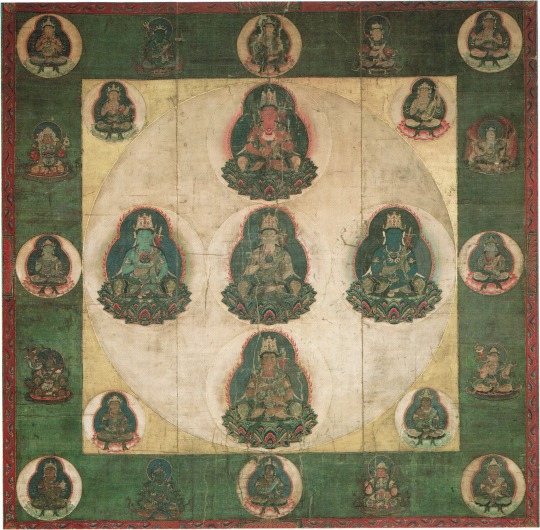
A copy of the Godai Kokuzō Mandara (五大虚空蔵曼荼羅), a mandala focused in the center on the five emanations of Kokuzō Bodhisattva (虚空蔵菩薩), dating to the Kamakura period (1185-1333) at Seinanin Temple (西南院) on Mount Kōya (高野山) in Wakayama Prefecture
Image from "天部の諸尊 / Divine Figures in the Realm of Deva" published by the Kōyasan Reihōkan Museum (高野山霊宝館) on Mount Kōya in 1994, page 32
#japanese art#buddhist art#虚空蔵菩薩#虚空蔵#kokuzo#五大虚空蔵#godai kokuzo#曼荼羅#mandala#和歌山県#wakayama prefecture#高野山#mount koya#koyasan#西南院#seinanin#五大虚空蔵曼荼羅#godai kokuzo mandara#真言宗#shingon#crazyfoxarchives#arte japonés#arte budista
298 notes
·
View notes
Text




Koyasan: In Pursuit of Enlightenment - Journeys in Japan | NHK World Japan
Join Tokyo based photographer Alfie Goodrich, as he goes deep within the mountains of Wakayama is the sacred site known as Koyasan, where a sense of stillness steadies the soul.
He meet fellow foreign travelers who came in search of inner peace and get to know the monks who work and live there, as he learns more of the history and culture of Koyasan.
#koyasan#mount koya#wakayama#japan#japan travel#japan vlog#vlog#spiritual japan#journeys in japan#nhk world japan#nature therapy
11 notes
·
View notes
Text
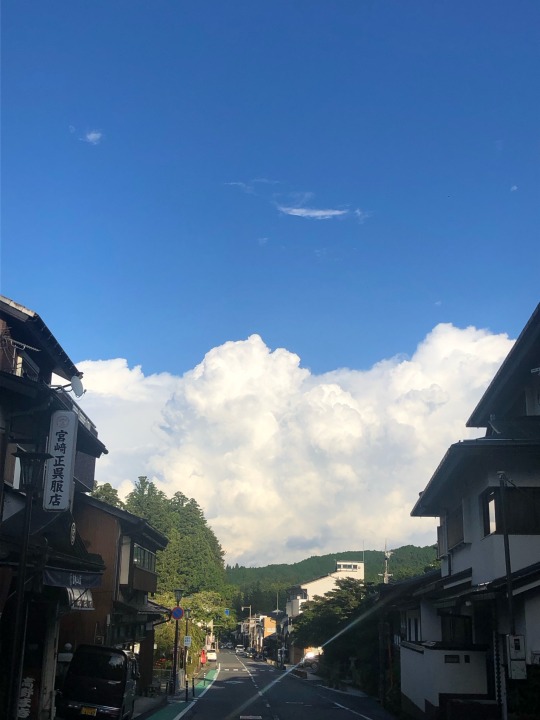
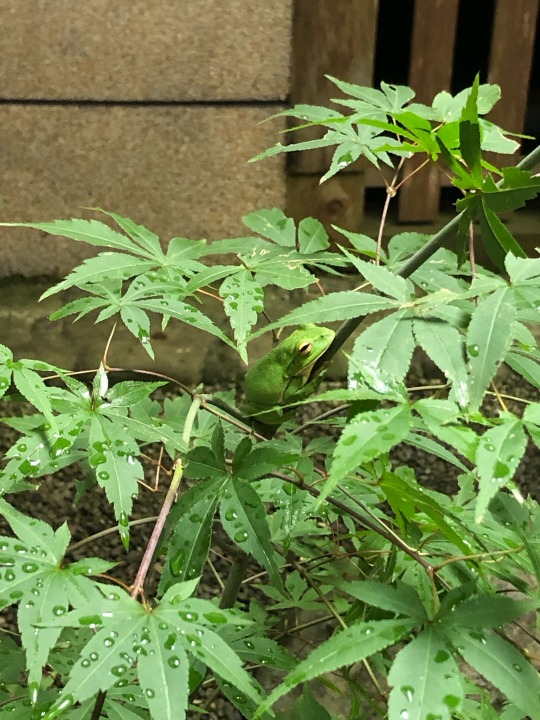
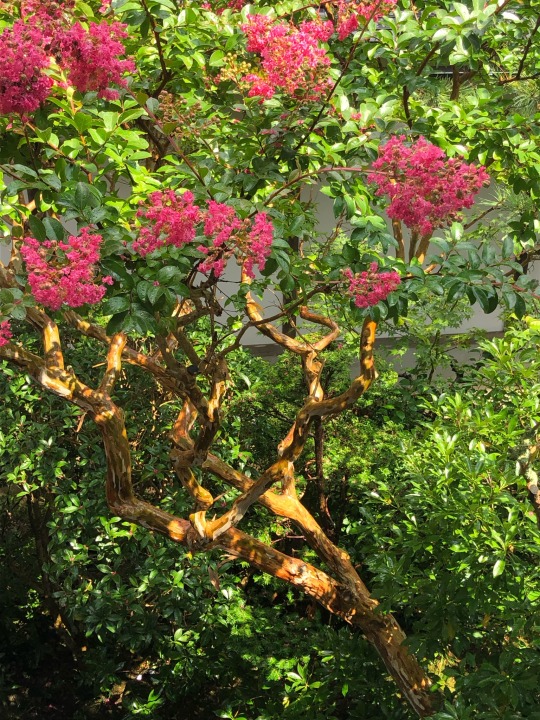
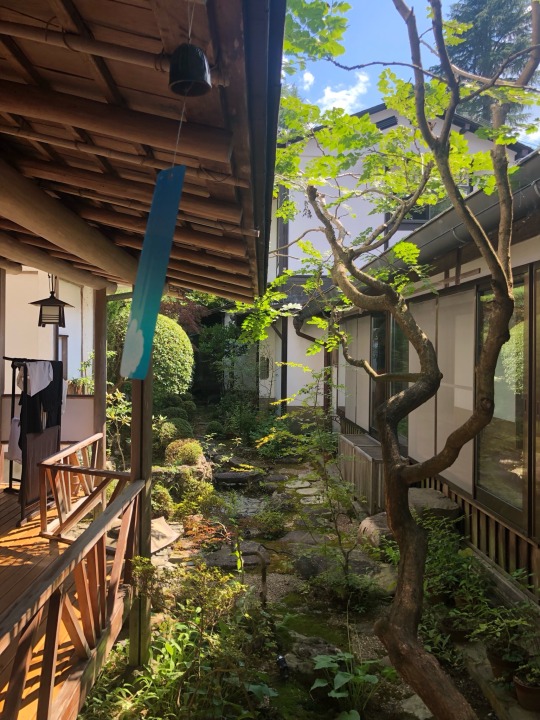
Summer in Koyasan (August, 2023)
高野山で過ごした夏🍦
#モリアオガエル#japan scenery#nature#japan nature#japan countryside#世界遺産#world heritage#koyasan#mount koya#日本の夏#nature photopragpy
34 notes
·
View notes
Text
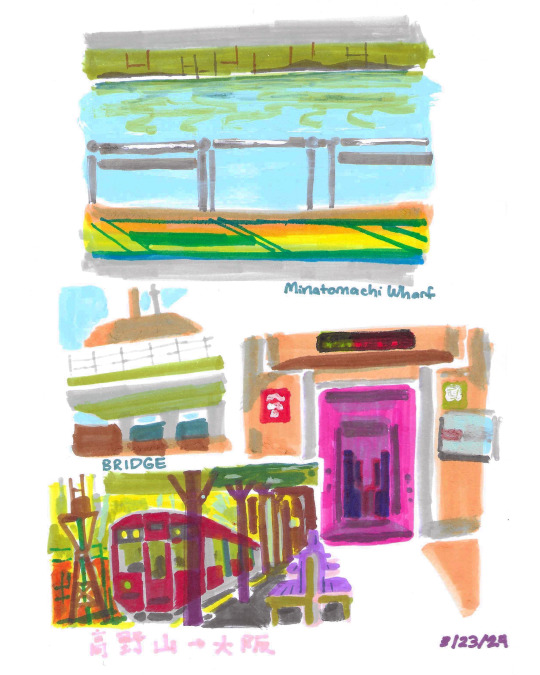
Small sketches drawn between Osaka and Koyasan.
11 notes
·
View notes
Video
20240629 Hattasan 9 by Bong Grit Via Flickr: これが撮りたかった、法多山の風鈴 Photo taken at Hattasan Soneiji temple, Fukuroi city, Shizuoka pref.
#Wind bell#Wind chime#Furin#Glass#Hattasan Soneiji temple#Hattasan Soneiji#Hattasan#Soneiji temple#Soneiji#Temple#Buddhism#Shingon buddhism#Mount Koya#Fukuroi#Shizuoka#Japan#Nikon#Nikon Df#AF-S NIKKOR 24-85mm f/3.5-4.5G ED VR#flickr
2 notes
·
View notes
Text
August 14-15, 1979: Kimiidera Temple & Mount Koya, Wakayama


0 notes
Text
Interview: Mount Koya, "Teien"
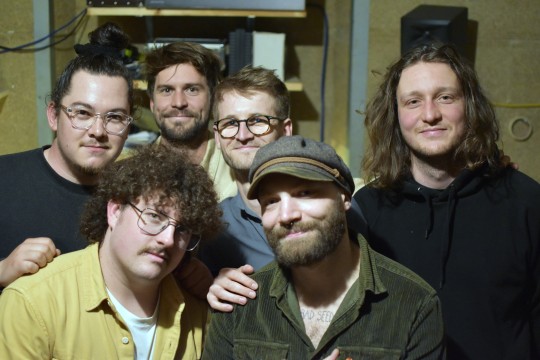
Mount Koya après notre interview, à travers mon vieux Nikon.
Six ans après notre première rencontre au Lapin Vert en 2018, Aria des Mount Koya m'a contactée pour me dire que le groupe avait terminé son nouvel album, Teien. Quelques jours plus tard, je me suis rendue dans le local de répétition du groupe à Vevey pour une interview. De quoi prendre des nouvelles du sextet par la même occasion. C'était en avril 2024.
Rejoignez-nous alors que nous parlons du nouvel album et de l'évolution musicale de Mount Koya, de la période post-covid, du soutien de la ville de Vevey aux groupes musicaux et plus encore.
Le nouvel album de Mount Koya, Teien, sortira le 8 novembre sur toutes les plateformes de streaming. Un vernissage est prévu le 16 novembre à l'espace ContreContre à Saint-Maurice.
La dernière fois que nous avons discuté, c’était en 2018. Beaucoup de choses se sont passées depuis!
Kevin: Oui, je me souviens, c’était au Lapin Vert ! Notre premier concert sous Mount Koya.
Tim: Il y a Matthieu et moi qui sommes nouveaux. Je suis arrivé fin 2018.
Antoine: L’un de nos membres, Patrick, est parti et Matthieu l’a remplacé. Cela change la dynamique, parce qu’il le remplace au synthé et plus avec une guitare.
Aria: C’est presque plus équilibré parce qu’avant, nous étions trois guitares, dont une à 12 cordes. Là, il y a deux claviéristes dont Matthieu qui joue des Rhodes, des orgues, et Léo qui fait plus du synthétique.
Matthieu: Du coup, notre dernier album a une vibe différente de ce qui s’est fait jusqu’à présent.
Tim: Je pense aussi que le fait que nous ayons une guitare en moins laisse justement plus de place aux guitares. Il y a donc un côté plus rock.
Antoine: C’est aussi ton style qui amène ça. Avant, je suivais ce que Patrick faisait, car c’est un peu lui qui m’a appris à jouer. Comme Tim est extérieur à cette bulle, il a amène quelque chose de plus rock et je dois m’adapter. C’est intéressant.
Kevin: Au niveau de la compo, tu as aussi plutôt composé à la guitare. Même si tu restes l’homme à tout faire (rires).
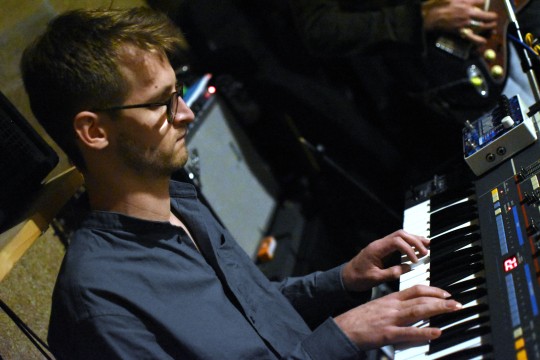
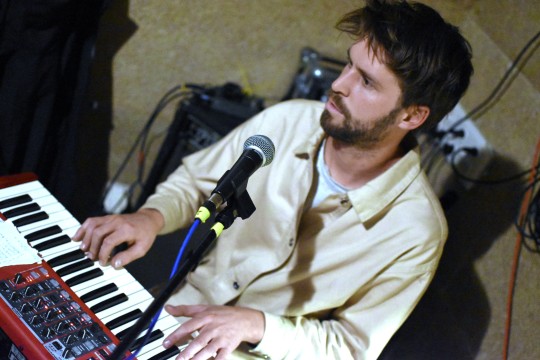
Et vos vies aujourd’hui?
Aria: Le Covid a réorganisé des choses. Je pense que nous nous concentrons plus sur faire de la musique pour nous-mêmes et notre plaisir plutôt qu’autre chose.
Léo: Durant cette période, nous avons fait de la musique pour le groupe. Nous n’avons pas vraiment pu rencontrer notre public, vu qu’il n’y avait plus de concerts. C’était justement une période de transition et d’expérimentation qui a permis de réorienter notre style et d’ouvrir de nouveaux élans créatifs. Sinon, pour notre vie à Vevey, nous sommes toujours aussi à l’aise dans cette ville qui nous soutient dans nos projets.
Kevin: l’essor culturel est toujours là. C’est très pluridisciplinaire.
Matthieu: Si je devais lancer des fleurs à la ville de Vevey – j’habite Lausanne, et c’est vrai que l’aspect culturel y est moins mis en avant.
Antoine: À chaque fois que nous avions des projets, nous avons été soutenus soit par l’AFM, soit par la ville. Nous avons de la chance de pouvoir être soutenus. Après le Covid, nous avons dû nous remettre sur pied et nous reconcentrer sur ce que nous voulions faire. Comme nous avons reçu ce soutien, nous avons eu le loisir de prendre un à deux ans où nous n’avons pas donné de concert, pour nous concentrer sur notre musique et créer un bel album. Si nous avions dû payer un local à 500 francs par mois à Lausanne, la donne n’aurait pas été la même.
Aria: Pour la suite de 2024, nous avons terminé notre album. Il devrait sortir le 8 novembre. Nous avons un vernissage prévu le 16 novembre, au ContreContre à Saint-Maurice.
Tim: C’est une galerie d’art sous le château.

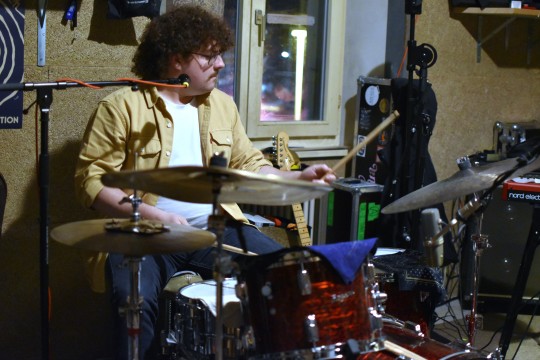
Parlons de votre nouvel album, Teien. J’ai recherché les kanjis sur Google, et j’ai vu que cela signifiat ‘jardin’, est-ce que c’est juste?
Aria: Oui, ce sont les caractères chinois qui désignent le jardin japonais.
Tim: Nous avons cherché pendant longtemps un concept. L’un de nos précédents disques, Jinrui, parlait de catastrophes naturelles. Celui-ci est sur les jardins.
Antoine: Cela nous a pris trois jours. C’était long (rires).
Matthieu: On voulait ouvrir la porte vers le processus créatif, du coup nous avons choisi le fil rouge des jardins. Nous nous sommes imaginés en train de déambuler dans différents jardins et y trouver un certain état d’esprit. De la sérénité, du confort peut-être. Une musicalité qui nous permettait de nous inspirer pour chaque chanson. Originellement, chaque chanson avait le nom d’un jardin. Maintenant, c’est aux auditeurs de retrouver quelle chanson va avec quel jardin.
Tim: par exemple, pour donner un indice, la chanson Memory se réfère à un cimetière. Nous considérons que le cimetière peut être un jardin. Il y a aussi les jardins de Babylone que nous avons renommé From the River to the Sea en hommage à la Palestine.
youtube
Aria: Nous avions aussi envie que les morceaux puissent vivre par eux-mêmes, sans le contexte de l’album. Nous avons fait des albums très contextuels, mais cette fois, nous avons écrit des chansons avec des paroles, plutôt que des morceaux psychés.
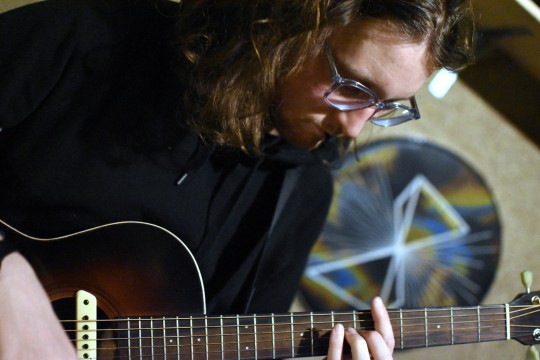
J’ai aussi trouvé que cet album était un peu influencé par les années 1960, avec un air de mouvement beatnik, par exemple dans la chanson Eden.
Aria: Depuis que nous travaillons sur cet album, j’ai passé énormément de temps à écouter des tubes.
Tim: Sa playlist est pleine de ‘guilty pleasures’ des années 60. (rires)
Aria: J’ai l’impression que la plupart de ces morceaux sont intemporels. Je m’en suis tout simplement inspiré. Tu as mentionné Eden avant – elle fait très Lou Reed et Iggy Pop. Il y a des références à des groupes qu’on adore écouter éparpillées au fil de l’album. Nous essayons de rendre hommage à la musique qu’on aime.
Tim: Tout l’aspect ‘voix’ vient d’Aria.

Matthieu: Il y a tout l’instrumental qui a été fait dans un premier temps, sous forme de jam qui se rétrécissait petit à petit. Les voix ont été posées après coup.
Léo: Elles donnent cet aspect plus ‘populaire’ et moins ‘concept’. Dans nos précédents albums, on chantait à trois ou quatre à l’unisson, avec des harmonies. Il y en a toujours dans cet album, mais je trouve que notre nouvelle direction donne un mélange plus homogène, comme un pot-pourri.
Aria: Cette fois, on a vraiment fait de la place à la voix. On a aussi passé énormément de temps à travailler les textes.
0 notes
Text
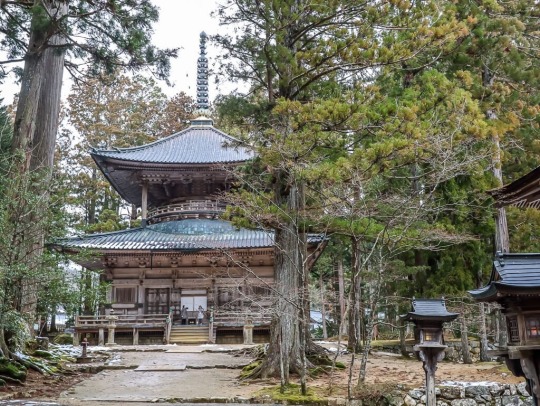
Koyasan - The Sacred Mountain of Shingon Buddhism
Nestled amidst the serene forests of the Kii Mountains in the north-eastern part of Wakayama Prefecture, south of Osaka, Koyasan, also known as Mount Koya, is a place of profound spiritual and historical significance. It is one of the three sacred sites, including Yoshino and Omine, and Kumano Sanzan, that are interconnected through ancient pilgrimage routes leading to the historic Japanese capital cities of Nara and Kyoto.
Koyasan is a place where time seems to stand still, where nature and spirituality blend seamlessly. This site is not merely a testament to religious devotion but also a reflection of the harmonious fusion of Shinto and Buddhism, two of Japan's most influential belief systems. Shinto, deeply rooted in Japan's ancient tradition of nature worship, coexists with Buddhism, introduced to Japan in the 6th century from China and the Korean Peninsula.
The origins of Koyasan's spiritual significance can be traced back to as early as the 9th century when several shrines were established, some predating the arrival of Buddhism in Japan. These shrines symbolize the rich tapestry of Japan's spiritual heritage and the coexistence of various belief systems over the centuries.
At the pinnacle of Koyasan stands Kongobuji, the principal temple of the esoteric Shingon Buddhist sect. Founded in 816 by the revered monk and scholar Kukai, also known as Kobo Daishi, this temple serves as the heart of spiritual practice in Koyasan. Kukai's vision transformed Koyasan into a sacred mountain for ascetic practitioners, and his legacy endures through the Shingon Buddhist tradition. Koyasan is home to a Designated National Treasure, featuring over 120 temples, each contributing to the spiritual ambiance and cultural significance of the area.
One of the most striking features of Koyasan is its Inner Sanctuary, which houses a vast cemetery, including the mausolea of many renowned figures in Japanese history. Among them is the final resting place of the 16th-century samurai ruler, Toyotomi Hideyoshi. This cemetery is not only a place of historical importance but also a testament to the enduring reverence for ancestors and the continuation of sacred traditions.
Koyasan is also marked by the grandeur of its Daimon Gate, which has stood as the main entrance to the temple complex since its inception. This gate, standing at a remarkable 25 meters in height, welcomes pilgrims and visitors alike, symbolizing the enduring spiritual journey that Koyasan represents.
Today, Koyasan continues to be an integral part of Japan's living culture. It is a place of deep spiritual connection and tranquility, attracting approximately 15 million visitors annually. The temple offers lodging facilities for pilgrims and visitors, allowing them to experience the serene ambiance of Koyasan and partake in its spiritual heritage.
In conclusion, Koyasan, with its rich history, spiritual significance, and cultural importance, stands as a testament to Japan's enduring reverence for the sacred and the coexistence of diverse belief systems. It is a place where the past seamlessly merges with the present, offering a unique and deeply enriching experience for all who visit.
12 notes
·
View notes
Quote
After his retreat, Young — who is now a meditation teacher better known as Shinzen Young, his new first name having been bestowed on him by the abbot at Mount Koya — found that his powers of concentration had been transformed. Whereas staying focused on the present had made the agonies of the ice-water ritual more tolerable, it made less unpleasant undertakings — daily chores that might previously have been a source not of agony but of boredom or annoyance — positively engrossing. The more intensely he could hold his attention on the experience of whatever he was doing, the clearer it became to him that the real problem had been not the activity itself but his internal resistance to experiencing it. When he stopped trying to block out those sensations and attended to them instead, the discomfort would evaporate. Young’s ordeal demonstrates an important point about what’s going on when we succumb to distraction, which is that we’re motivated by the desire to try to flee something painful about our experience of the present. This is obvious enough when the pain in question is physical, like icy water on naked skin and a flu jab at the doctor’s office — cases in which the difficult sensations are so hard to ignore that it takes real effort to shift your attention elsewhere. But it’s also true, in a subtler way, when it comes to everyday distraction. Consider the archetypal case of being lured from your work by social media: It’s not usually that you’re sitting there, concentrating rapturously, when your attention is dragged away against your will. In truth, you’re eager for the slightest excuse to turn away from what you’re doing, in order to escape how disagreeable it feels to be doing it; you slide away to the Twitter pile-on or the celebrity gossip site with a feeling not of reluctance but of relief.
Oliver Burkeman, Four Thousand Weeks
#'the real problem had not been the activity itself but his internal resistance to experiencing it'#Oliver Burkeman#Four Thousand Weeks
14 notes
·
View notes
Text
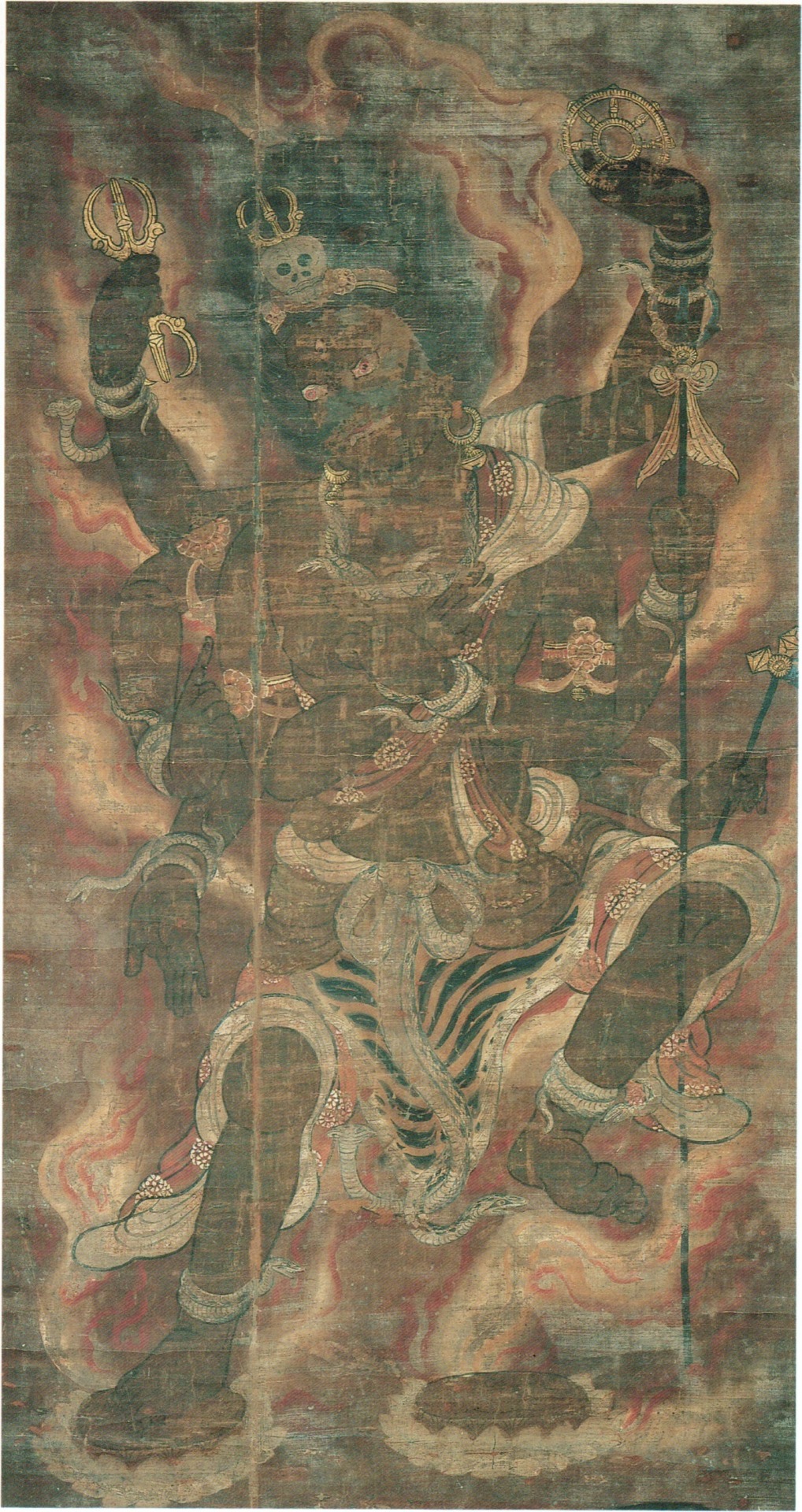
A painted image of the wrathful deity Gundari Myōō (軍荼利明王) dating to the Kamakura period (1185-1333) at Kōmyōin Temple (光明院) on Mount Kōya (高野山) in Wakayama Prefecture
Image from "高野山の明王像 / The Figures of Myōō (Vidyārājas) at Kōyasan" published by the Kōyasan Reihōkan Museum (高野山霊宝館) on Mount Kōya in 1993, page 25
#japanese art#buddhist art#軍荼利明王#gundari myoo#和歌山県#wakayama prefecture#高野山#mount koya#koyasan#光明院#komyoin#真言宗#shingon#crazyfoxarchives#arte japonés#arte budista
155 notes
·
View notes
Text




Koyasan | Overnight Trip From Osaka by japan-guide.com
#koyasan#mount koya#japan#wakayama prefecture#japan vlog#vlog#travel vlog#japan countryside#rural japan#japan travel#japan guide#wakayama
12 notes
·
View notes
Text
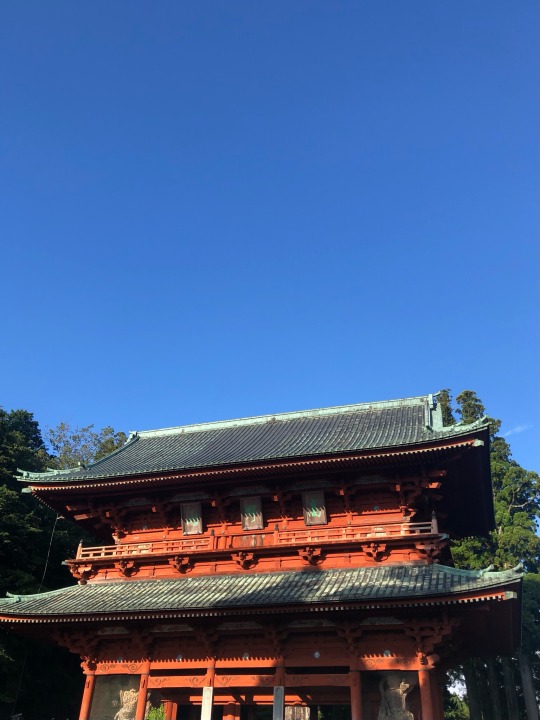
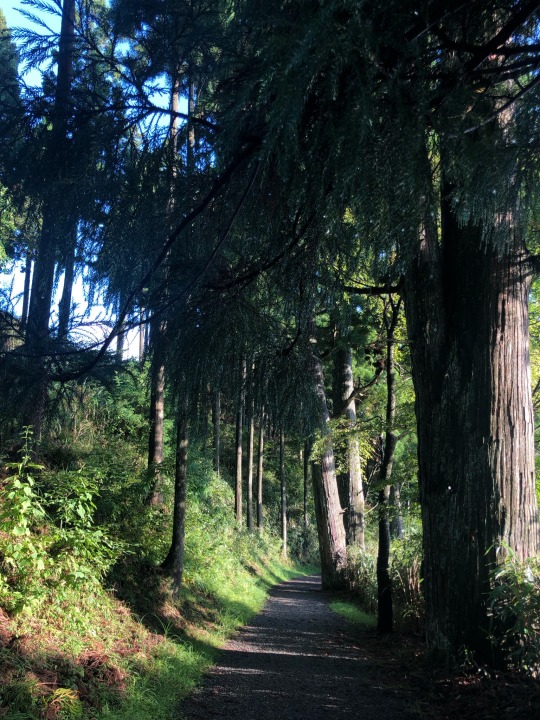

高野山大門 Daimon Gate, Koyasan, Wakayama
3 notes
·
View notes
Text
THE STORY OF MAMANKAM Part 2/3
These articles quote a lot from K. V. Krishna Ayyar's The Zamorins of Calicut and Wikipedia (which again uses the aforementioned text as the main source). So all credits go to K. V. Krishna Ayyar and the Wikipedia contributors.
Samoothiri - Zamorin, the King of Kozhikode
Valluvakonathiri - The King of Valluvanadu
1. The Legend of the Cheraman Perumal
2. Mamankam During the Reign of Samoothiri
The word "Mamankam" is considered a Malayalam corruption of two Sanskrit words, Maha-Magham (Great Magha) or Maha-Makham (Great Sacrifice). It seems to have begun as a duodecennial (occurring every 12 years) temple festival, similar to the Kumbha Mela. During the Mamankam, it was believed that the goddess Ganga herself descended into the Perar.
This was how Mamankam was conducted in the times of Samoothiri:
Mamankam was conducted once in every 12 years. As soon as the rains subsided in August-September, preparations begun for the coming Mamankam. First, a letter was written to Pandyas, a reminiscence of Chera days. Then circulars were sent to the feudatories and bodyguards, commanding them to be present at Thirunavaya.
Special officers were appointed for the festival. The two banks of the river were guarded by Kottol Patanayakan and Vayyavinat Nampati respectively.
The Thirunavaya Navamukunda temple, which the Samoothiri had to visit daily, stands on the north bank of the Perar. Even now the platform (called Nilapadu thara) on which the Samoothiri had to take his stand (nilapadu) with his sword can be seen in Thirunavaya.
Samuthiri arrived at Thirunavaya on Punartam in the month of Makaram, and the festival began on the next day (Pooyam). After ablutions, he would put on his jewellery and make offerings to his guru Dharmoth Panikkar. After worshipping Ganapati (the lord of obstacles) and Valayanad Bhagavati (the tutelary deity), he proceeded in state to the Nilapadu thara with his retinue.
Descending from his litter at the base of the lower platform, he would mount it and bow towards the Lord of Tirunavaya (Navamukundan) with joined palms. Then he would ascended the Nilapadu thara and shake his sword. After this, the Pantheerayiram (12,000 strong bodyguard) would shake their sheilds decorated with gold and silver. Apart from them, Samoothiri was guarded by different battalions of Eranadan soldiers, Naval captain Kunjali Marakkar's artillery and port authority Shah Bandhar Koya's forces. Suicide warriors called Chavers (see part 3 for details) would approach the Samoothiri from all sides during this time.
Marakkar's guns were then fired, which was the signal for the the next-in-line, Eralppadu, to appear on his own platform on the other side of the river. Then three rounds were fired from both banks, after which the Samoothiri, bowing once more towards Navamukundan, descended from the platform, and returned to the palace.
The afternoons witnessed a grand procession on elephant-back, attracting immense crowds. On the twentieth day, the elephant which carried the Samoothiri was so richly decorated that it looked like a mountain of gold.
In this way, for around one month, from Ayilyam in Makaram to Tiruvathira in Kumbham, went on the celebrations. All the while the Samoothiri was guarded zealously by his companions of honour, a group of 12,000-16,000 warriors who have sworn to die and kill for him.
3. Chavers of Valluvanadu
6 notes
·
View notes
Text

高野箒[Kōyabōki] Pertya scandens
高野[Kōya] : 高野山[Kōya-san](Mount Kōya)
箒[-bōki|Hōki] : Broom
This name comes from the fact that brooms were made from this grass and used in Kōya-san.
And, there is a food called 高野豆腐[Kōya-dōfu](Freeze-dried tōfu), which is said to have originated in Kōya-san, hence the name. It is liked or disliked by different people because in addition to the tōfu being light in flavor, it has a spongy texture. https://en.wikipedia.org/wiki/Koya-dofu
Meanwhile, 北大路 魯山人[Kitaooji Rosanjin], who was known as an epicure, stated the following in his essay 高野豆腐. https://en.wikipedia.org/wiki/Rosanjin https://bunka.nii.ac.jp/heritages/search?artist=rosanjin
しかし、高野豆腐を賞味するということはシャレたことだから、そうやすやすと取り扱うべきものではない。
[Shikashi, kōyadōfu wo shōmi suru to iu koto wa shareta koto dakara, sō yasuyasu to toriatsukau beki mono dewa nai.] However, since tasting Kōya-dōfu is a swanky thing to do, it should not be handled so casually. Source: https://www.aozora.gr.jp/cards/001403/files/49974_37663.html
And, 高野槙[Kōyamaki](Sciadopitys verticillata), a coniferous tree endemic to Japan, also got its name because it grew abundantly in Kōya-san. Incidentally, in old slang, going to the toilet was called 高野参り[Kōya-mairi](lit. visit to Kōya-san).
Its flowering season is late autumn.
16 notes
·
View notes
Text
Gateways to Japan’s Sacred Sites: Spiritual Journeys for Mind and Body

Introduction Japan’s spiritual landscape is deeply intertwined with its physical environment. Many of the country’s most sacred sites serve as gateways to Japan’s sacred sites, offering pathways to wellness and introspection. From the pilgrimage trails of Kumano Kodo to the sacred grounds of Mount Koya and Ise Shrine, these destinations provide not only religious experiences but also a deep connection to nature. In this article, we will explore Japan’s most revered spiritual sites and how they serve as wellness gateways for both body and soul. Mount Koya: A Spiritual Haven in Wakayama Mount Koya (Koyasan) is one of Japan’s most sacred mountains and the headquarters of Shingon Buddhism. Founded in the 9th century by Kobo Daishi, Mount Koya houses over 100 temples. Many of these temples offer shukubo (temple lodging) for visitors. When guests stay overnight, they can participate in meditation sessions, morning prayers, and Buddhist vegetarian meals (shojin ryori). These activities promote mental clarity and physical wellness. Furthermore, the mountain serves as the starting point for several pilgrimage routes, including the Koya Pilgrimage. This trail takes hikers through serene forests and past ancient temples, acting as a gateway to Japan’s sacred sites. Walking these paths is deeply meditative, offering travelers a chance to reflect and reconnect with nature. Kumano Kodo: Ancient Pilgrimage Routes The Kumano Kodo is a network of ancient pilgrimage routes winding through the mountains of the Kii Peninsula. These routes lead to the three grand shrines of Kumano Sanzan: Kumano Hongu Taisha, Kumano Nachi Taisha, and Kumano Hayatama Taisha. Pilgrims have walked these trails for over a thousand years in search of spiritual enlightenment. Today, the Kumano Kodo Pilgrimage invites modern travelers to embark on both a spiritual and physical journey. The trails require stamina and endurance, making the experience rewarding. The pilgrimage serves as a gateway to Japan’s sacred sites while also promoting personal wellness. Along the way, visitors can enjoy onsen bathing, especially at Yunomine Onsen, one of Japan’s oldest hot springs. Walking the Kumano Kodo combines physical exertion with spiritual contemplation. Ise Shrine: Gateway to Japan’s Spiritual Heart Ise Jingu, located in Mie Prefecture, is Japan's most important Shinto shrine. It is dedicated to the sun goddess Amaterasu Omikami. As Japan’s spiritual heart, Ise Jingu attracts millions of visitors annually. Many undertake the pilgrimage to connect with their spiritual roots. The shrine is surrounded by ancient forests, creating a peaceful and reflective atmosphere. Visitors can participate in traditional Shinto rituals and stroll along the sacred Uji Bridge. This bridge symbolizes the transition from the physical world into the spiritual realm. The combination of nature, ritual, and reflection at Ise Shrine makes it a powerful place for spiritual and mental well-being, reinforcing its status as one of the key gateways to Japan’s sacred sites. Conclusion Japan’s sacred sites offer more than just spiritual enlightenment; they are gateways to Japan’s sacred sites, providing opportunities for personal wellness. Whether you seek the solitude of Mount Koya, the ancient paths of Kumano Kodo, or the serenity of Ise Shrine, these spiritual destinations allow travelers to embark on a journey of self-discovery. They are deeply grounded in Japan’s rich traditions and connection to nature. Read the full article
#IseShrine#Japan#Japaneseculture.#KumanoKodo#meditation#MountKoya#personalwell-being#pilgrimage#sacredsites#ShingonBuddhism#spiritualjourneys#wellness
0 notes